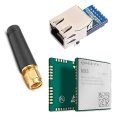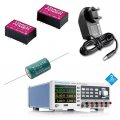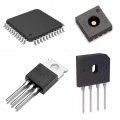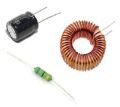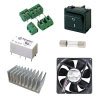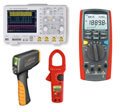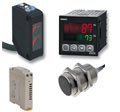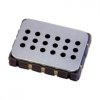Innovative sensors for measuring the concentration of flammable and toxic gases have been developed for demanding industrial environments, for example, in the mining, gas, oil or chemical industries, and for every area where there is a risk of dangerous gas leakage and a direct risk of explosion at work.
Miroslav Piskor, the product specialist from SOS electronic, prepared an overview of gas sensors from SGX Sensortech, which we included in our product range.
 SGX Sensortech - gas sensors manufacturer from Neuchatel, Switzerland
SGX Sensortech - gas sensors manufacturer from Neuchatel, Switzerland

SGX Sensortech was originally founded in May 2012 and consisted of companies formerly known as: e2v industrial gas sensors based in Chelmsford and e2v microsensors and MiCS Microsensors based in Neuchatel. Since October 2016 SGX has been part of the Amphenol Advanced Sensors division. Headquarters is in Neuchatel, Switzerland, with research and development and production facilities in Switzerland, Poland, and China, with a combined production capability of several million sensors per year.
SGX Sensortech specializes in:
- electrochemical sensors
- catalytic sensors - pellistors
- NDIR sensors
- thermal conductivity sensors
- semiconductor sensors
- sensors for detecting hydrogen leakage and thermal explosion of the accumulator
Technology and Products
Electrochemical Sensors
The presence of target gas produces a chemical reaction between the gas and oxygen contained in the sensor. This reaction produces a small current, which is proportional to the concentration of the gas present.
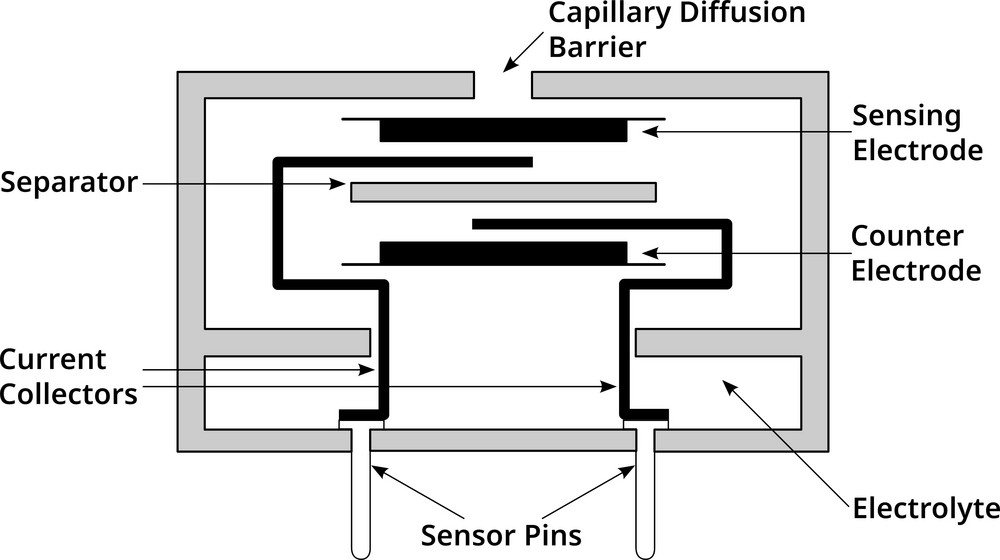
SGX Sensortech offers SGX-4, EC4 and PS4 sensor series for portable systems and SGX-7 series for fixed applications.
Applications
- Safety applications (toxic gases) for portable and fixed devices
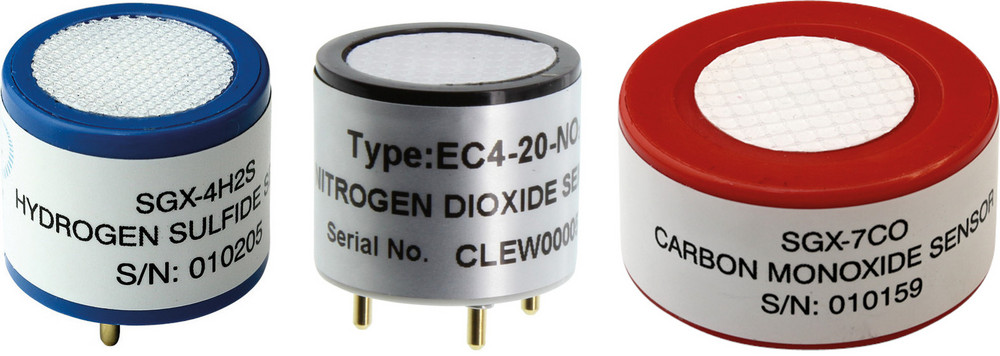
- Mining
- Parking lots and underground spaces
- Healthcare
- Oil and gas processing
- Process control
- Animal husbandry and agriculture
- Food storage
- Crop cultivation
- Katalytické senzory – pelistory
Catalytic Sensors - Pellistors
Pellistors are gas sensors that detect combustible gases and vapors in the air (or oxygen-containing atmosphere) in concentrations up to the lower explosive limit or LEL. The detection element consists of a small ceramic "pellet" with a catalyst that surrounds a platinum wire (resistor), so the term "pellistor" is a combination of "pellets" and "resistor".

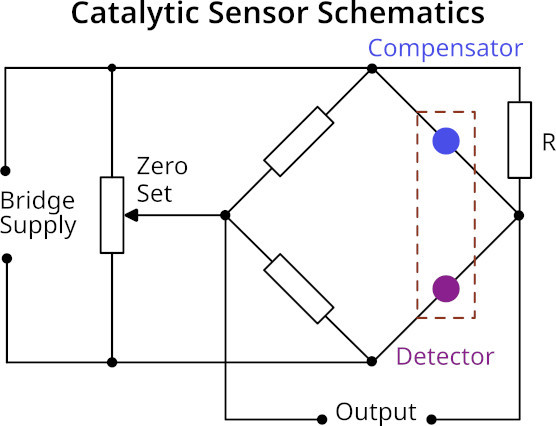
The catalytic sensor contains a sensing element - a detector and a compensating element - a compensator. The current passing through the platinum wire of the detector heats the catalytic material to about 500°C. At this temperature, the catalytic material can burn the target gas, which leads to an increase in temperature and an increase in the resistance of the platinum wire. To compensate for environmental influences such as temperature and pressure, the detector is paired at the factory with a compensator that does not have a catalytic layer. The detector and compensator are typically connected to the Wheatstone bridge along with the resistors. The output signal is proportional to the gas concentration.
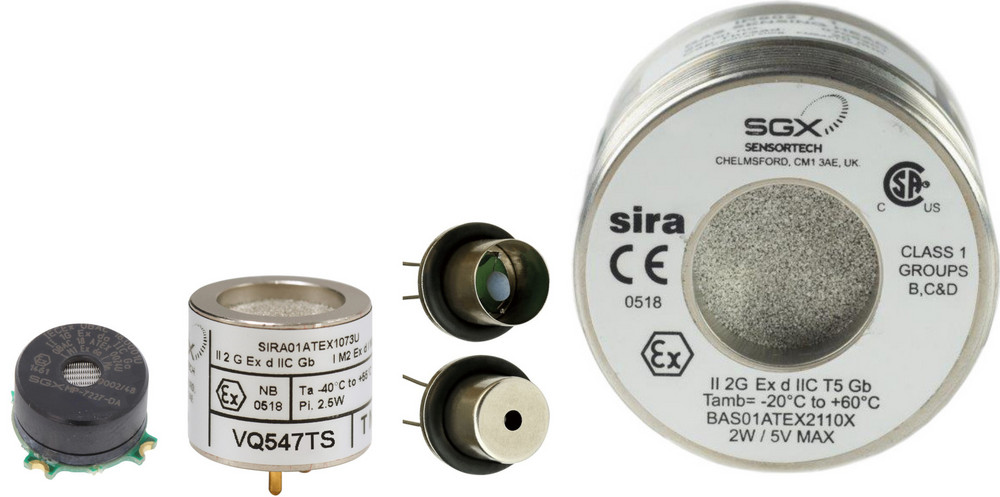
- pellistors pairs
- pellistors pairs in VQ500 and MP7217/7227 ATEX/IECEx certified enclosures for portable devices
- pellistors pairs in a VQ600 ATEX/IECEx certified enclosure for fixed systems.
NDIR Sensors
The NDIR (Non-Dispersive Infra-Red) sensor uses the fact that molecules of target gas absorb infrared radiation of certain wavelengths. The higher the gas concentration, the more radiation gas absorbs. For example, the band 4.2 to 4.3μm has the maximum absorption for CO2 and minimal absorption for other gases in the air and methane has a strong absorption peak at 3.23 um.
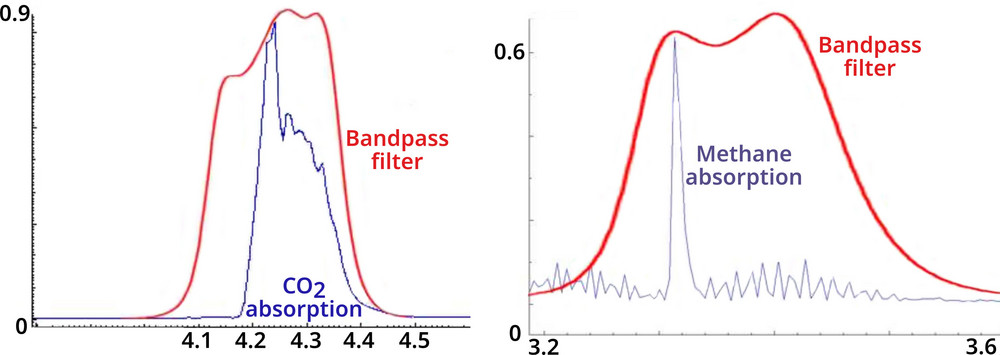
All SGX NDIR sensors except IR31SE use a dual-channel configuration with active and reference channels. The signal from the reference channel is used to compensate for changes in the intensity of the IR lamp over time or with changes in the reflectivity of the optical cavity and the transmittance of the infrared filters in front of the detectors.
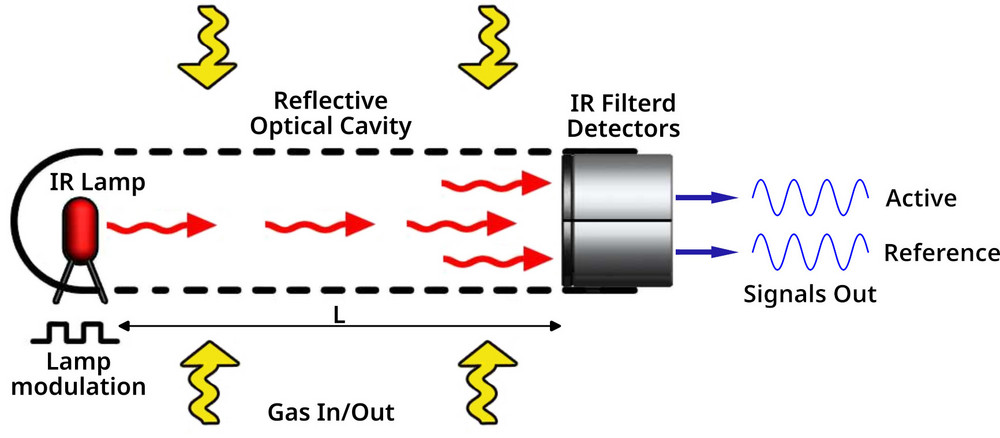
SGX offers a wide range of NDIR sensors with analogue outputs:
- for single gas / single-channel, non-certified: IR31SE
- for single gas / dual-channel, non-certified: IR3 series except IR31SE
- for single gas / dual-channel, ATEX / IECEx certification: IR1 series 1, 2
- for single gas / dual-channel, ATEX / IECEx certification, mining applications: IR2 series 1, 2
- for two gases / three-channel, ATEX / IECEx certification: IR15T series
- for two gases / three-channel, ATEX / IECEx certification, mining applications: IR25T series
- sensor heads - for single gas / dual-channel, ATEX / IECEx certification: IR600 series
- for singles / dual-channel, ATEX / IECEx certification with UART and analog output: INIR and INIR2 series
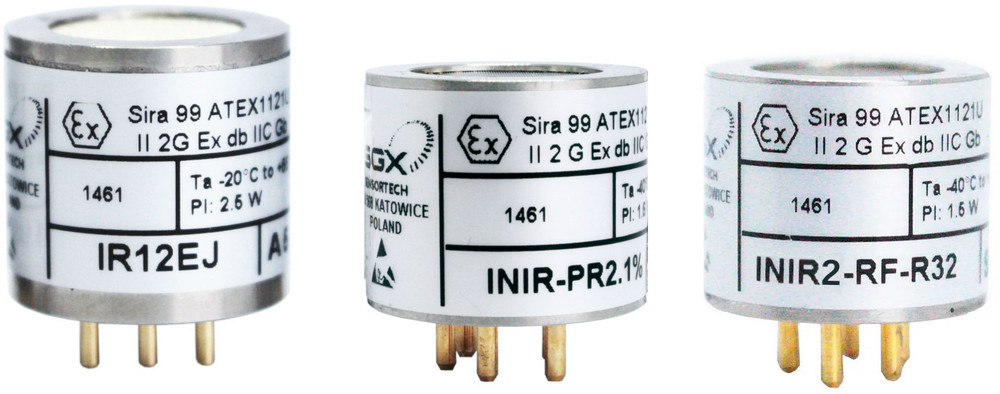
Thermal Conductivity Sensors
Thermal conductivity sensors are suitable for measuring the concentration of gases that have a thermal conductivity significantly different from the reference gas, usually air. Examples are hydrogen, helium, and methane.
The sensor consists of two identical sensing elements, similar to the compensators used in catalytic sensors. The detection element is positioned to allow exposure to the target gas. The reference element is housed in a sealed housing containing the air and is not exposed to the target gas. When the sensor is exposed to the target gas, the thermal conductivity of the atmosphere around the detection element changes, leading to higher or lower heat loss, which leads to a decrease or increase in the temperature of the detection element and thus to its resistance.
Thermal conductivity sensors are not selective, so they are only suitable for applications where the target gas is known.
SGX Sensortech offers thermal conductivity sensors such as
- pairs of pellistors
- pellistor pairs in ATEX / ICEx certified housing (VQ500 for portable devices and VQ600 for fixed devices).
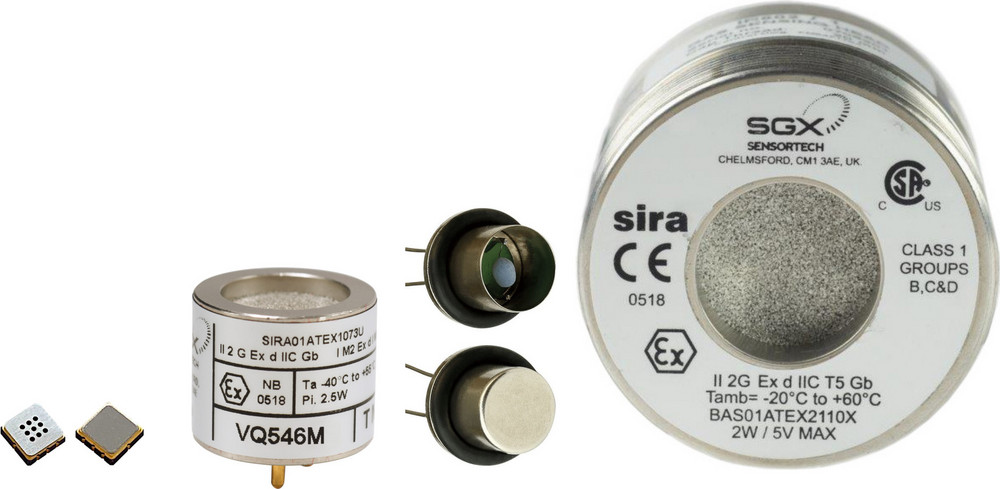 Catalytic, Thermal Conductivity and NDIR Sensors Applications
Catalytic, Thermal Conductivity and NDIR Sensors Applications

- Gas leakage detection
- Mining
- Process control
- Safety applications (portable and fixed solutions)
- Oil & Gas processing
- Cooling systems
Metal Oxide Semiconductor Sensors
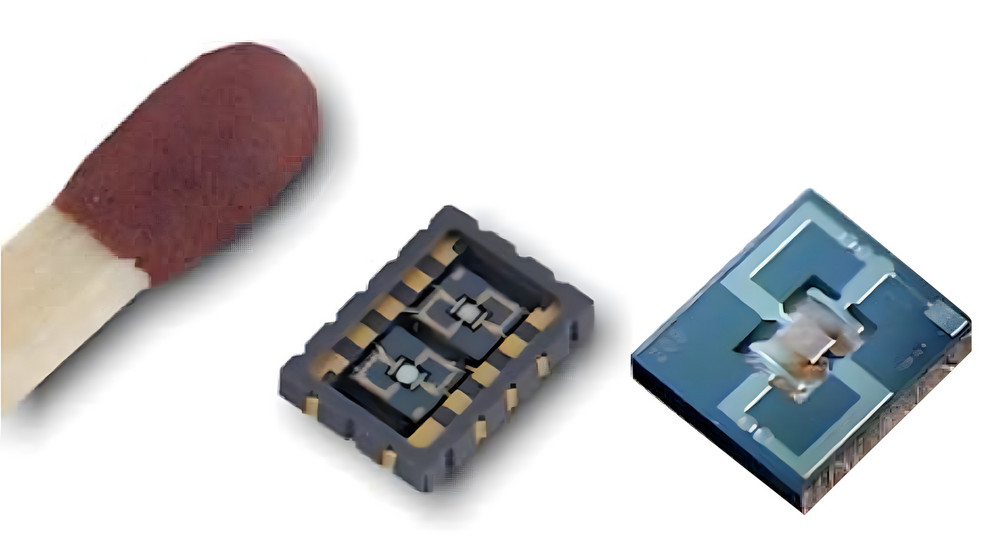
The sensing layer is heated by a heater, which causes oxygen from the atmosphere to be absorbed on the boundaries of the nanoparticles in the form of negatively charged ions. Oxygen ions bind the electrons and thus lead to the formation of a depleted layer, which results in an increased resistance of the sensing layer (baseline resistance Ro). The presence of oxidizing gases, such as ozone, causes that more oxygen is absorbed which leads to increasing of resistance. On the other hand, reducing gases like CO react with the absorbed oxygen ions, and the formerly bound electrons are available again as charge carriers in the sensing element which leads to the decrease of resistance.
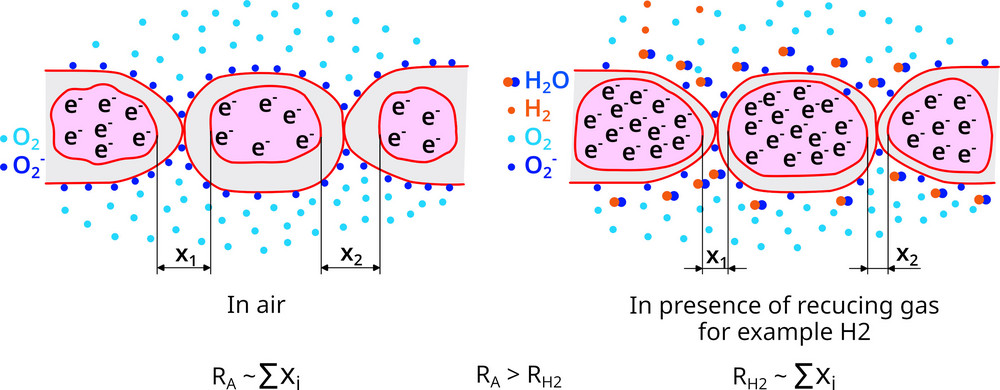
Semiconductor gas sensors are more complex than other sensors because they combine thermal, chemical, and electrical effects. The basic resistance Ro can vary greatly from sensor to sensor and according to the measurement conditions, therefore SGX recommends evaluating the relative change of the sensing resistance Rs to the basic resistance Ro; S = (Rs - Ro) / Ro which allows the detection of changes in gas concentration.
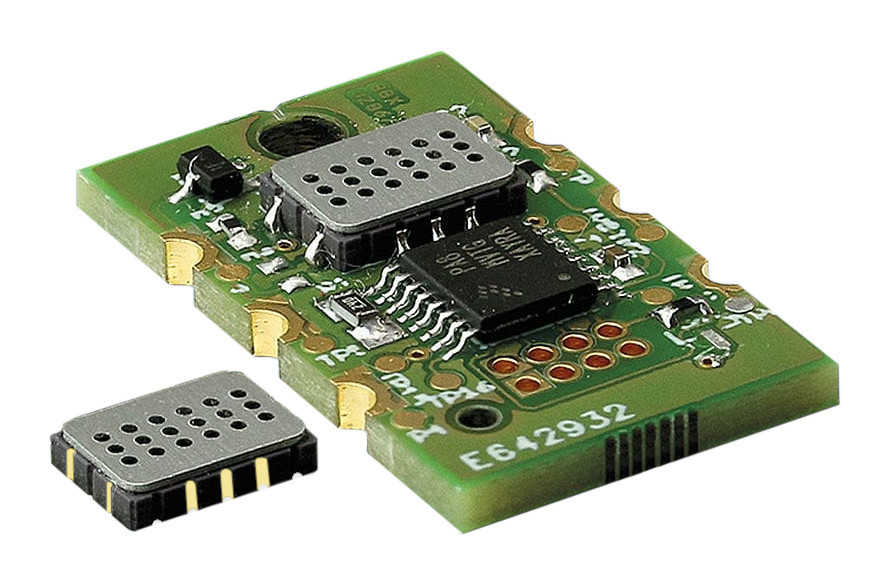
Hydrogen Leakage & Battery Thermal Runaway Detection Sensors
SGX offers IP6K7 rugged sensors:
- BLD1 - Hydrogen, CAN 500 kbps interface
- BLD2 - Hydrogen, Carbon Monoxide, CAN 500 kbps interface
- TRDU5 - (Thermal Runaway Detection Unit) - Hydrogen + Carbon Monoxide + Ammonia + Rel. Humidity + Temp + Pressure, LIN 2.1 / 19 200 Baud
They are suitable for hydrogen leak detection in storage tanks, fuel cells and hydrogen filling & EV charging stations and for early detection of thermal runaway in Li-ion batteries.
Technology Comparison
The table below gives you a comparison of features provided by different sensor technologies.
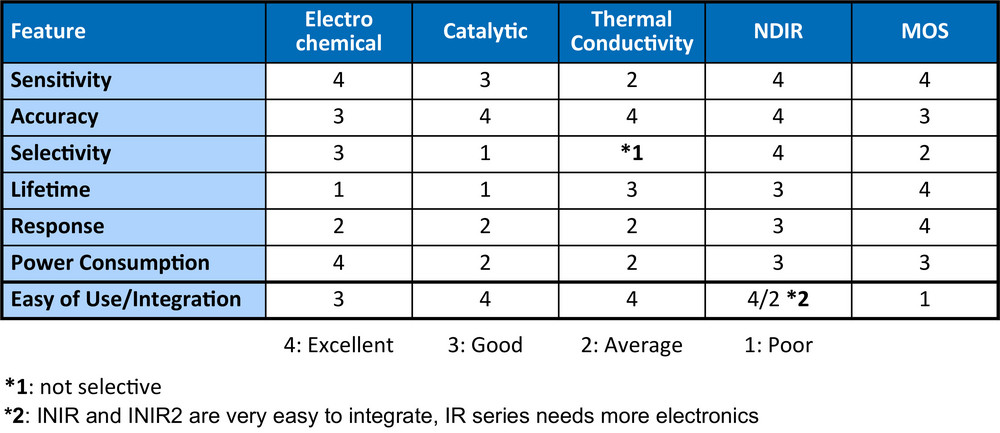
Evaluation Kits
SGX offers ECVQ-EK3 evaluation kit for catalytic and electrochemical gas sensors, IR-EK2 for NDIR sensor series with analogue output (IRxxx), INIR-EK4 for INIR and INIR2 series and MICS-EK1 for MOS sensors.
Are you interested in more information on SGX Sensortech products or technical advice when choosing a product? Or do you have another question or request? It is simple. Fill out the following form, we will be happy to help you.
Do you like our articles? Do not miss any of them! You do not have to worry about anything, we will arrange delivery to you.
